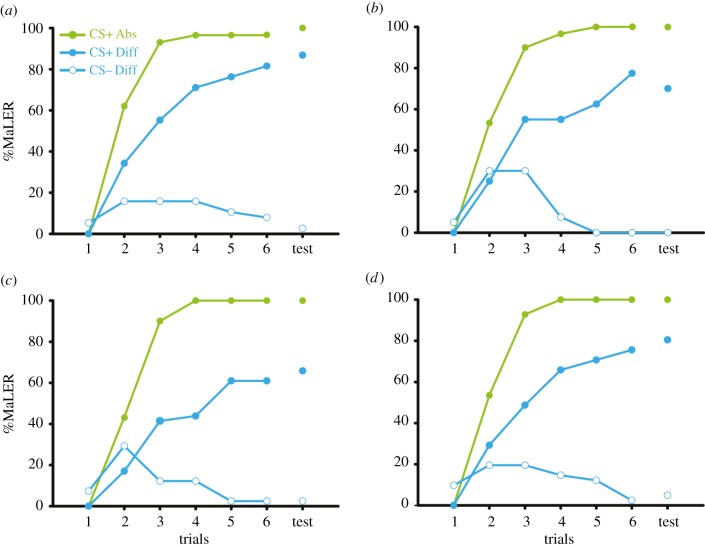Figure 1.
Ants trained with absolute conditioning learn faster and better than ants trained with differential conditioning. The figure shows the percentage of ants responding with the maxilla-labium extension response (%MaLER) to the rewarded odour after absolute conditioning (CS+, green full dots) and to the rewarded and punished odours after differential conditioning (CS+, blue full dots; CS−, blue empty dots) along the conditioning trials. The levels of response to the trained odours in the tests are shown by single dots in the same graphs. (a) Hexanal+ (n = 29) versus hexanal+/octanal− (n = 38); (b) heptanal+ (n = 30) versus heptanal+/nonanal− (n = 40); (c) octanal+ (n = 30) versus octanal+/hexanal− (n = 41); and (d) nonanal+ (n = 28) versus nonanal+/heptanal− (n = 41). All odours were successfully learnt and all odour combinations were successfully differentiated. The presence of the CS− in differential conditioning reduced the learning success of the CS+ as shown by lower rates of acquisition and lower levels of responses to the CS+ in the test, compared with ants trained with absolute conditioning.

